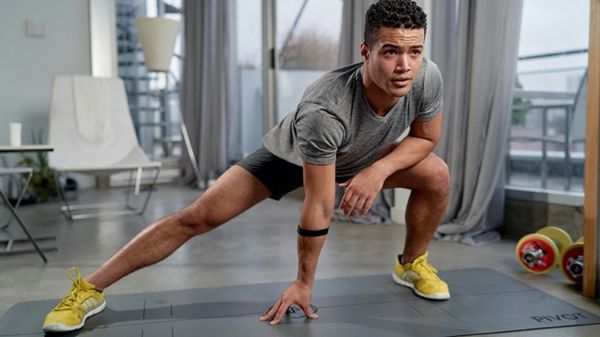
Are you tired of slogging through long, monotonous cardio sessions without seeing the results you want? High-intensity interval training (HIIT) and steady-state cardio are two popular methods for improving fitness and achieving weight loss goals. But which one is best for you? In this blog post, we’ll explore the pros and cons of both HIIT and steady-state cardio to help you find the perfect workout that suits your health needs and fitness goals. Whether it’s building endurance or shedding pounds, we’ve got you covered! So let’s dive in and discover which type of cardio is right for your body type!
What is HIIT?
HIIT, or high-intensity interval training, is a type of exercise that alternates between short bursts of intense activity and periods of rest or low-intensity activity. HIIT has been shown to be more effective than steady-state cardio for improving fitness and burning fat.
HIIT workouts typically last for 30 minutes or less, making them more convenient than traditional workouts. HIIT can be done with any type of exercise, including running, biking, rowing, and even swimming.
One of the main benefits of HIIT is that it helps you burn more fat in less time. HIIT also boosts your metabolism and helps you build muscle. Studies have shown that HIIT can help improve your cardiovascular health and decrease your risk of obesity, diabetes, and heart disease.
What is Steady-State Cardio?
Steady-state cardio is a type of cardiovascular exercise that involves maintaining a consistent heart rate and level of effort for an extended period of time. It is usually performed at a lower intensity than HIIT, making it a good option for beginners or those looking for a less intense workout.
There are many benefits to steady-state cardio, including improved heart health, increased endurance, and better fat burning. It is also a great way to boost your overall fitness level and can be easily incorporated into any workout routine.
If you’re looking to improve your cardiovascular health or lose weight, then incorporating some steady-state cardio into your workout routine is a great way to do so.
Pros and Cons of HIIT vs. Steady-State Cardio
There are a few key differences between HIIT and steady-state cardio when it comes to health and fitness goals. First, HIIT is typically more time-efficient since it can be done in shorter bursts. Second, HIIT may help to burn more calories in the long run due to its higher intensity levels. Finally, HIIT may also help to improve cardiovascular health more than steady-state cardio. However, there are also some potential downsides to HIIT that should be considered. These include the fact that it can be more challenging and thus lead to a higher risk of injury, as well as the possibility that it could cause post-exercise fatigue or “rebound fatigue.”
Which One Is Better for Your Health and Fitness Goals?
The answer to this question depends on what your specific health and fitness goals are. If you’re looking to improve your cardiovascular fitness and lose weight, then HIIT may be the better option for you. Studies have shown that HIIT can help you burn more calories in a shorter amount of time than steady-state cardio.
However, if you’re simply looking to improve your overall health and don’t have any specific fitness goals, then steady-state cardio may be the better choice. Steady-state cardio has been shown to reduce your risk of heart disease and other chronic health conditions.
Ultimately, the best way to decide which type of cardio is right for you is to talk to your doctor or a certified personal trainer. They can help you assess your individual needs and make a recommendation based on your health and fitness goals.
How to Incorporate Both Into Your Workout Routine
When it comes to your workout routine, there are many different ways that you can go about incorporating both HIIT and steady-state cardio. However, the most important thing is to find what works best for you and your individual fitness goals.
One way to incorporate both HIIT and steady-state cardio into your workout routine is by doing a HIIT workout followed by a period of steady-state cardio. For example, you could do a 20-minute HIIT workout on the treadmill followed by a 20-minute jog at a moderate pace. This would give you a great mix of both types of cardio while also helping you to reach your fitness goals.
Another way to incorporate both types of cardio into your workout routine is by alternating between HIIT and steady-state cardio workouts each day. So, one day you may do a 20-minute HIIT workout followed by a 20-minute jog. The next day, you could do a 30-minute walk at a moderate pace followed by 10 minutes of sprinting intervals. By alternating between the two types of workouts, you’ll be able to get the best of both worlds while also seeing great results.
No matter which method you choose, make sure that you’re listening to your body and giving yourself enough rest in between workouts. Both HIIT and steady-state cardio can be tough on the body, so it’s important to take breaks as needed in order to avoid injury and burn
Conclusion
In summary, HIIT and steady-state cardio both offer great health benefits and can help you reach your fitness goals. It all comes down to personal preference when deciding which of these types of exercise is best for your own individual needs. If you are looking for a way to burn more calories in less time then HIIT is likely the better option whilst those who have limited time or suffer from injuries should opt for steady-state cardio. Whichever type of exercise you choose, make sure it’s something that you enjoy as this will help ensure consistent effort and better results!










